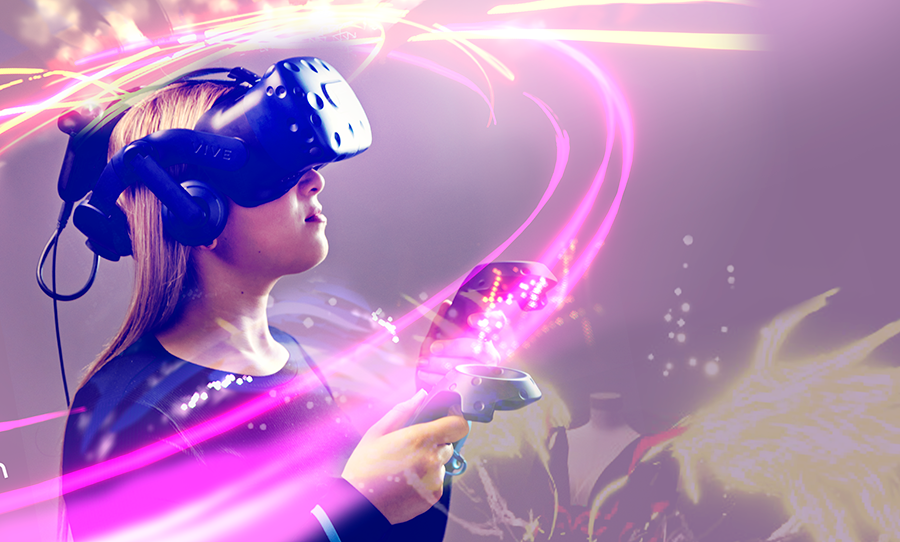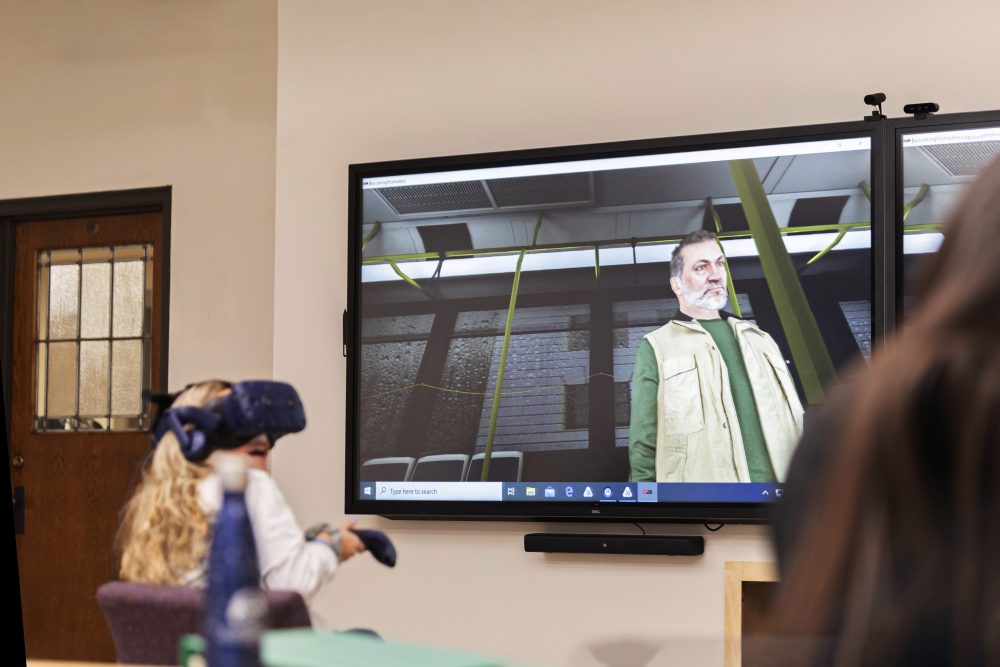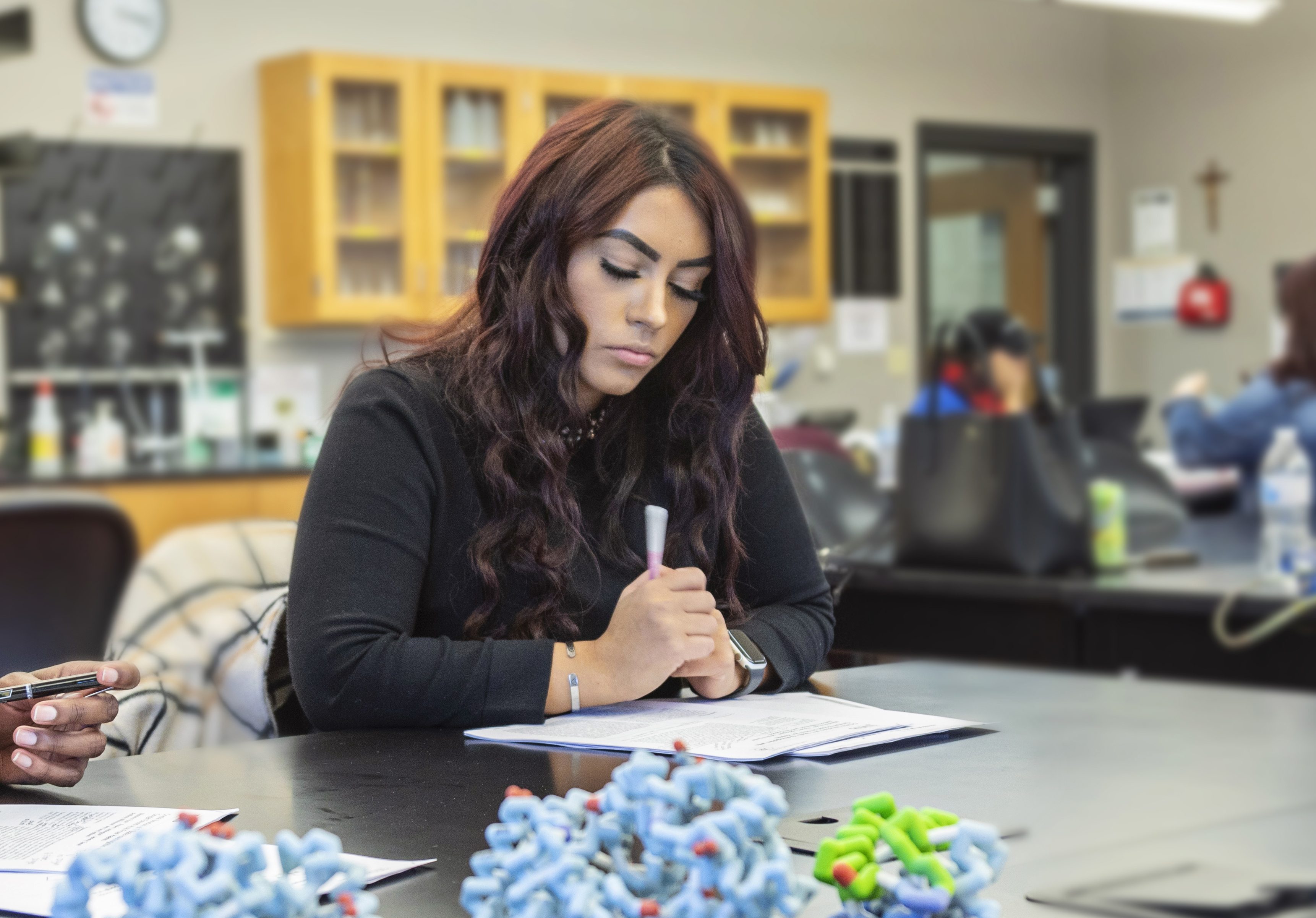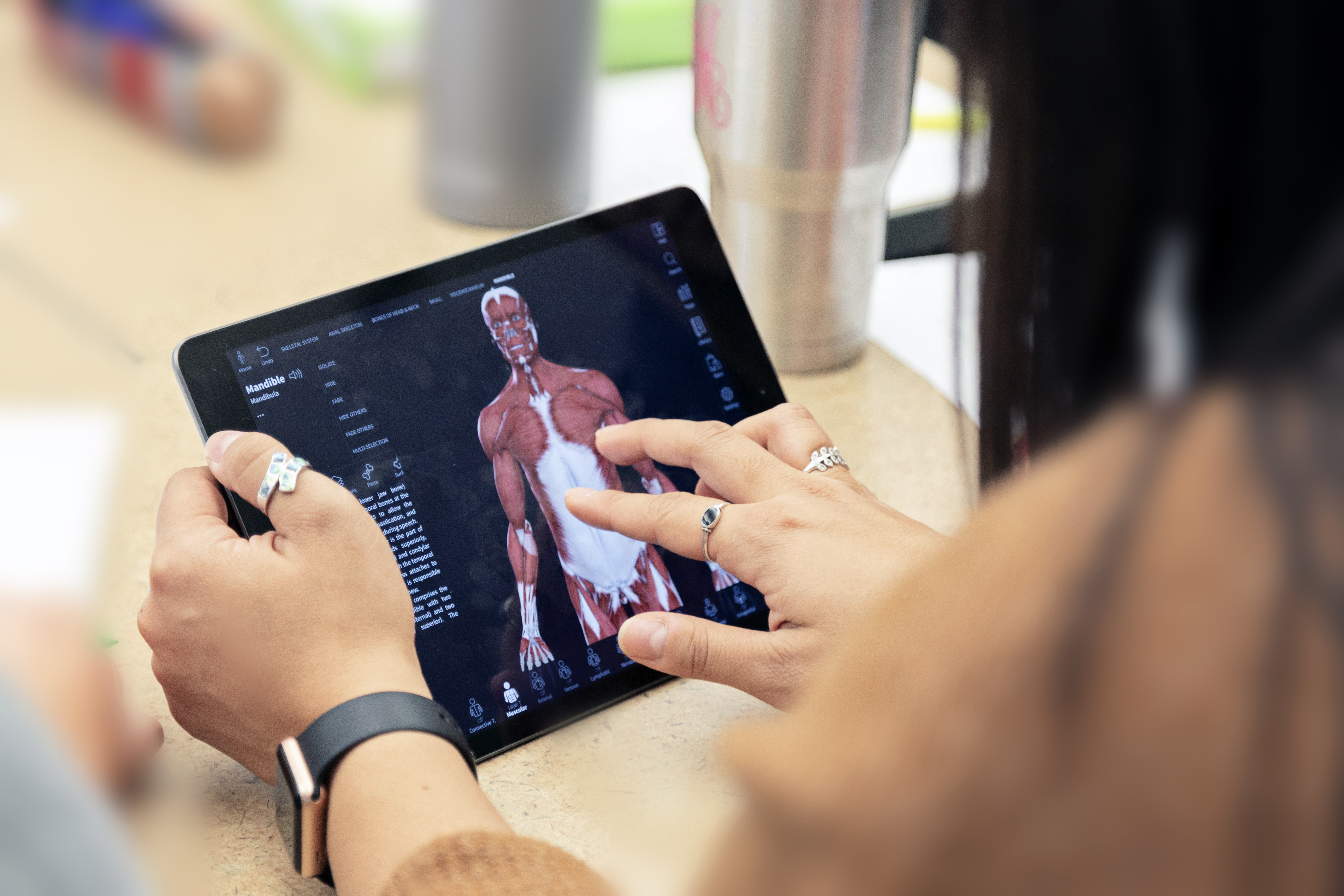Virtual reality
At the touch of a button, the world opens up

Posted on April 23, 2020
The walls of the classroom are white, and so are the tables and chairs that face a large screen. Like a blank canvas, it is designed to transport students well beyond its walls using virtual reality (VR) technology.
When this classroom powers up, the world bursts to life in vivid color and three dimensions.
Located in the lower level of Notre Dame Hall near the main stairwell, Mount Mary’s virtual reality classroom was hard-wired and fully outfitted in summer 2019.
Enthusiastic faculty partnered with Mount Mary’s information technology department to explore immersive virtual reality programs and learn how to integrate VR into the classroom. Ever since, they have been re-envisioning the boundaries of the classroom and using virtual reality programs across disciplines to enrich the curriculum in many programs.
It has enabled — among many other things — chemistry students to walk through a molecule, and interior design students to fully envision rooms of their own creation.

“We have found this to be an innovative way to integrate technology in a way that helps students learn faster and retain the information longer,” said Cheryl Bailey, Ph.D., dean of the school of Natural & Health Sciences
and Education.
Professors in counseling, occupational therapy, nursing, sciences, math, communications and interior design are among the early adopters on campus.
“Using this technology has helped our students see their science in a whole new way,” said Kathy Boyle, an assistant professor in the biology department.
A 2018 study at Cornell University indicated that 78% of those who participated in virtual reality learning said they would prefer virtual reality to other learning modalities.
“The immersive nature of virtual reality transforms these experiences into high-impact learning,” Bailey said. For example, when occupational therapy students study the visual and vestibular systems and strap on the headset to experience for themselves the sensation of motion sickness, they build a powerful connection between academic and experiential knowledge.
“This allows a student to immerse themselves into a situation as if they truly feel they are in that experience,” Bailey said. “That elicits a lot of emotion and that is part of the learning,” she said.
This fall, counseling students in a multicultural counseling class experienced “Becoming Homeless,” a program that immerses them in a role-playing scenario designed to let them more deeply understand the situation of poverty and homelessness.

A Stanford University study suggested that through this specific program, students became more empathetic toward the homeless, and that the empathy endured for longer than those who did not have this type of virtual experience.
“If we want to impact people, we want to engage them on all levels of their person,” Bailey said.
While some of these experiences are awe-inspiring and produce a sense of wonderment, others are immediate and practical. Communications students this spring are using a public speaking program called Ovation.
Using this program, a student can select the type of public speaking environment and the size of the audience. As the student delivers her speech, the program tracks any nervous behavior and stumbles that she can fix prior to real-life delivery, where the stakes are much higher, whether it is in the classroom or the professional world.

“Giving students the ability to practice using these types of scenarios will help them in every aspect of the real world, from internships and interviews to professional presentations,” Bailey said.
Students are using other types of virtual reality in Mount Mary classrooms as well. The physics faculty members have been using virtual reality glasses in the classroom to see views of the earth, and the occupational therapy department has acquired 24 iPads for augmented reality experiences that range from practicing medical charting to viewing and dissecting a virtual cadaver that is projected onto the surface of the classroom table.
“Virtual reality is opening doors for our faculty and students to have embodied experiences that would otherwise be too expensive or physically impossible,” said Brian Markovich, an application specialist in Mount Mary’s Department of Information Technology who helped facilitate the VR implementation on campus. “It’s exciting to provide our faculty members the tools to innovate completely new ways of teaching.”
Mount Mary’s Jewel Scholars were among the first students to experience virtual reality. Students in this four year learning community for science scholars have conducted extensive research on hemoglobin, first studying diagrams on the computer and then creating 3-D models.

Some students have been studying the effects of a specific medication on hemoglobin cells, while others have compared the oxygen-carrying ability of myoglobin in large animals such as Asian elephants and sperm whales.
A virtual reality computer program called Nanome enabled them to walk through their particular molecules, giving them a chance to visualize them in a whole new way.
“We saw things like they’re supposed to be seen,” said senior Brooke Uebersetzig, who walked into a myoglobin cell and saw, all around her, how the shape changed when bound to oxygen.
“Once we were in the molecule, it all made sense.”




